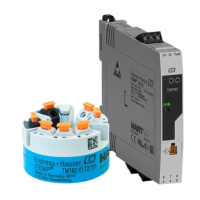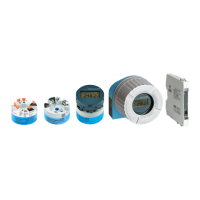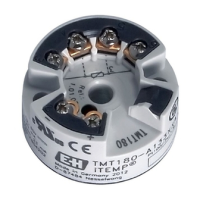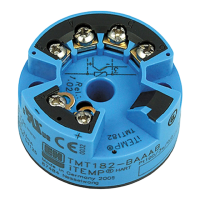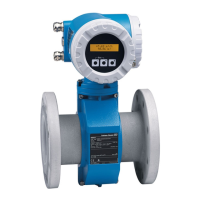Maintenance TMT84
34 Endress+Hauser
6.6 Acyclical data exchange
Acyclical data exchange is used to transfer parameters during commissioning, maintenance or for
the display of further measured variables, not contained in cyclical data communication. Parameters
for identification, control or adjustment can thus be changed in the various blocks (physical block,
transducer block, function block) while the device is in cyclical data exchange with a PLC.
The device supports the following basic types of acyclical data transfer:
MS2AC communication with 2 available SAPs.
When observing acyclic communication, a distinction must be made between two types:
6.6.1 Class 2 master acyclic (MS2AC)
MS2AC refers to acyclical communication between a field device and a class 2 master (e.g.
FieldCare, PDM etc.). The master opens a communication channel via an SAP to access the device.
All parameters to be exchanged with a device using PROFIBUS
®
must be communicated to a master
class 2. This assignment is done either in a device description (DD), a DTM (device type manager)
or within a software component in the master via slot and index addressing for each individual
parameter.
The slot and index, details on length (byte) and the data record are transferred in addition to the
field device address when parameters are written using a master class 2. The slave acknowledges
this write request on completion. The blocks can be accessed with a class 2 master.
The parameters that can be used in the E+H operating program (FieldCare) are shown in the tables
in chapter 11.
Note the following for MS2AC communication:
• As already explained, a class 2 master accesses a device via special SAPs. Therefore, the number
of class 2 masters that can communicate simultaneously with a device will depend on the number
of SAPs made available for this communication.
• The use of a class 2 master increases the cycle time of the bus system. This must be taken into
account when programming the control system used or control.
6.6.2 Class 1 master acyclic (MS1AC)
In the case of MS1AC, a cyclic master, which is already reading the cyclic data from the device or
writing the data to the device, opens the communication channel via the SAP 0x33 (special service
access point for MS1AC) and can then, like a Class 2 master, acyclically read or write a parameter
by means of the slot and the index (if supported).
The following should be noted with MS1AC communication:
• At present, there are very few PROFIBUS masters on the market that support this kind of
communication.
• Not all PROFIBUS devices support MS1AC.
• In the user program, you must be aware that constant parameter writing (e.g. with every program
cycle) can drastically reduce the operating life of a device. Parameters written acyclically are
written to memory modules (EEPROM, Flash, etc.). These are resistant to voltage. These memory
modules are only designed for a limited number of writes. This number of writes is not even
nearly reached in normal operation without MS1AC (during configuration). This maximum figure
can be quickly reached as a result of incorrect programming and thus the operating time of a
device can be drastically reduced.
The device supports MS2AC communication with 2 available SAPs. MS1AC communication is
supported by the device. The memory module is designed for 10
6
writes.
7 Maintenance
In general, no specific maintenance is required for this device.

